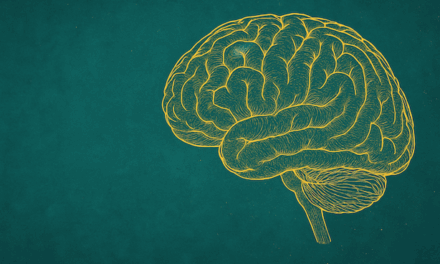Abstract
This article provides a comprehensive overview of Charles Darwin’s theory of evolution, its development, and its profound implications. Beginning with the state of knowledge before Darwin and his transformative journey aboard the HMS Beagle, it chronicles the development of Darwin’s revolutionary ideas. The article delves into the theory itself, its integration with genetics in the modern synthesis, and its evidence in various fields like the fossil record, population genetics, and comparative anatomy. It also addresses the philosophical and theological implications of the theory, its portrayal and misconceptions in popular culture, and the importance of accurate communication and education. Conclusively, it asserts the ongoing relevance of Darwin’s theory in shaping our understanding of the biological world, our place within it, and our approach to life’s profound questions.
Introduction
Charles Darwin’s theory of evolution stands as one of the most transformative ideas in the history of science. Its impact extends beyond the confines of biology, influencing a wide range of disciplines, from philosophy and theology to popular culture. Darwin’s revolutionary concept reshaped our understanding of the natural world and our place within it, setting the stage for more than a century of scientific exploration and discovery. This article embarks on a journey through Darwin’s life, his development of the theory of evolution, its modern synthesis, and its profound philosophical and theological implications.
The Scientific Landscape at the Dawn of Darwin’s Work
As Charles Darwin embarked on his journey into the world of biology, the understanding of evolution, species, and the Earth’s age was vastly different from what we recognize today. The 19th century was a time of scientific curiosity and discovery, but many of the concepts we now take for granted were then nebulous, hotly debated, or entirely absent.
Regarding evolution, the prevalent belief was fixism, the notion that species were unchangeable, created as they are, and have remained the same since the inception of life. This perspective was largely driven by religious interpretations that saw species as divine creations. Scientists like Jean-Baptiste Lamarck had begun to challenge this notion with theories of species transformation, but these ideas were not widely accepted within the scientific community.
The concept of species itself was quite fluid. While the term “species” was in use, its definition lacked the clarity we associate with it today. Species were often defined by visible characteristics or similarities, with no understanding of the genetic intricacies that underpin species differentiation.
The Earth’s age, too, was a topic of considerable debate. A widely accepted view was Ussher’s chronology, which proposed that the Earth was only a few thousand years old, based on genealogical studies of the Bible. However, this clashed with the emerging geological evidence of an ancient Earth, a tension that underscored the challenges faced by scientists of the era.
Thus, as Darwin stepped into the scientific arena, he was entering a world ripe for revolution. The answers to fundamental questions about life, its diversity, and the very planet it inhabited were far from settled. The stage was set for Darwin to turn the tide of scientific understanding, and to challenge the deeply entrenched beliefs of his time.
The Voyage of the HMS Beagle and Darwin’s Explorations
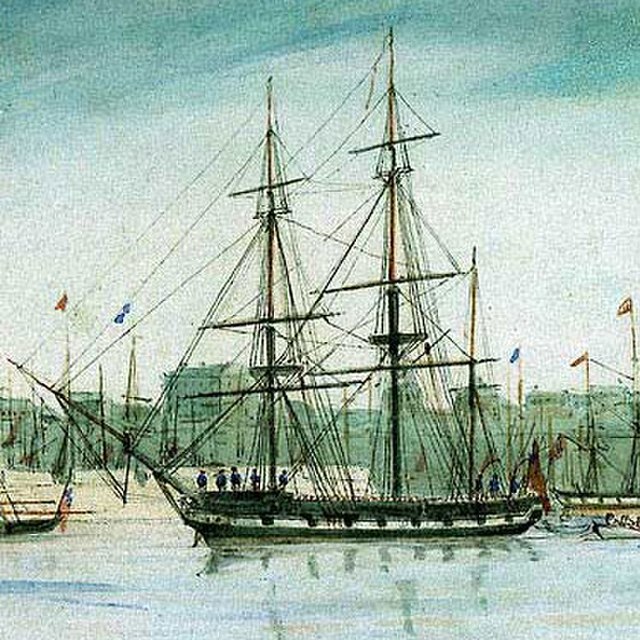
HMS Beagle. Image: Wikimedia Commons/ HMSBeagle.jpg
In December 1831, the young Charles Darwin, then a budding naturalist, embarked on a voyage that would profoundly shape his understanding of the natural world and ultimately revolutionize biology. He was invited to sail aboard the HMS Beagle, a ship commissioned by the British government to map the coastline of South America and perform hydrographic surveys around the globe.
Darwin, however, had broader ambitions. Seeing this as an unprecedented opportunity, he set out to document and understand the diversity of life. Throughout the five-year voyage, he collected an enormous variety of specimens, ranging from plants and animals to fossils and geological samples. He observed, sketched, and chronicled everything with meticulous attention to detail, his notes brimming with curiosity and wonder.
The voyage was marked by several pivotal moments. One such occasion was his visit to the Galapagos Islands, a volcanic archipelago teeming with unique species. Darwin was struck by the distinct differences between species on each island, particularly the finches, each exhibiting beaks uniquely adapted to their specific diet and habitat. This observation would later prove instrumental in formulating his theory of natural selection.
Equally impactful were his encounters with fossils in South America, such as the remains of extinct giant armadillos. Darwin was intrigued by the remarkable resemblance these extinct creatures bore to living species in the same region. This led him to question the fixist notion of the immutability of species.
The voyage of the Beagle served as an immersive classroom for Darwin, his observations and experiences gradually building a puzzle that would only become clear years later. His open mind, keen observational skills, and indomitable curiosity laid the foundation for his revolutionary understanding of life on Earth. The voyage, though grueling at times, was the crucible in which the theory of evolution by natural selection was born.
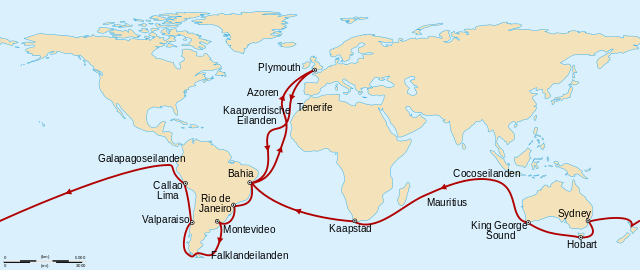
HMS Beagle’s Voyage. Image: Sisyphos23/CC-BY-SA-3.0
From Beagle to Book: The Genesis of Darwin’s Theory
Returning from the voyage of the HMS Beagle, Darwin was awash with observations and samples, but also with questions. The enigmas of the Galapagos, particularly its finches, gnawed at him. Why were they so different on each island, and yet so similar in other ways? He invited ornithologist John Gould to help classify the bird samples he’d collected.
Gould’s findings were illuminating: the birds Darwin had thought were an assortment of finches, blackbirds, and wrens, were in fact all finches – separate species of them. This was a pivotal moment for Darwin. The implications of these disparate yet related species cohabitating the same archipelago led him down the path of evolution
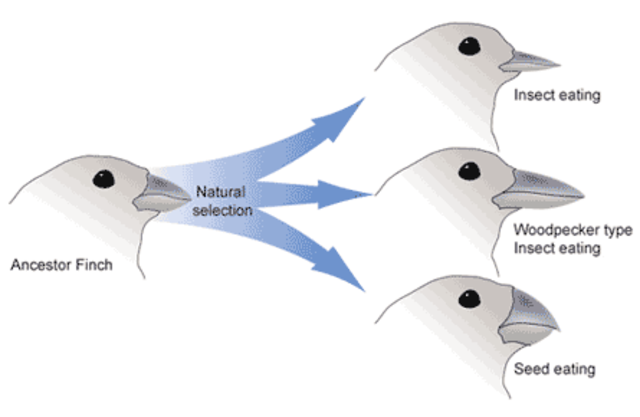
“Darwin’s Finches”. Image: Wikimedia Commons/ National Genome Research Institute
His breakthrough came after reading the work of economist Thomas Malthus, who posited that human populations, if unchecked, would grow exponentially, eventually outstripping food supply. Darwin extrapolated this concept to the natural world. Every organism, he reasoned, produced far more offspring than could possibly survive, leading to a ceaseless struggle for resources.
In this struggle, not all organisms would be equally successful. Those with beneficial variations – slight differences in traits that provided an edge in the competition for resources – would, on average, fare better than their peers. They would be more likely to survive, reproduce, and pass on these advantageous traits to their offspring.
This process was strikingly similar to the way animal and plant breeders selected for desirable traits, a practice Darwin was familiar with from his own hobby of breeding pigeons. But in nature, this selection was not guided by human hands; it was the product of environmental pressures and survival needs. Darwin termed this “natural selection.”
In the years following his voyage, Darwin began synthesizing these insights into a cohesive theory, a process that would culminate in his groundbreaking work “On the Origin of Species.” His ideas challenged the conventional wisdom of his time, igniting a revolution in our understanding of life on Earth.
“On the Origin of Species”: Darwin’s Extended Argument
In November 1859, Charles Darwin released his magnum opus, “On the Origin of Species.” The book was not a mere collection of observations and theories; instead, it presented one extended, cohesive argument that aimed to explain the complexity and diversity of life on Earth.
One of the key intellectual tools Darwin used in constructing his argument was the principle of “consilience of inductions,” a concept he borrowed from philosopher William Whewell. According to Whewell, if a single explanation can account for a broad range of phenomena, it can be considered a “true cause.”
Darwin’s theory of natural selection was a prime example of this. He demonstrated how natural selection, much like the artificial selection practiced by breeders, could drive the evolution of species over time. He presented compelling evidence from a wide array of fields, showing how natural selection offered a unified explanation for phenomena that had long puzzled biologists.
First, he pointed to social behaviors in animals like ants and bees, explaining how cooperative behaviors could evolve for the benefit of the group. He also delved into the geographic distribution of species, showing how natural selection could account for the striking patterns of similarity and difference among species in different regions.
Darwin then tackled systematics, the field concerned with the classification of organisms, a task pioneered by scientists like Carl Linnaeus. He showed how the nested hierarchy of classification – kingdoms, phyla, classes, orders, families, genera, species – was a reflection of the branching tree of evolution.
Furthermore, he drew upon the fields of morphology and embryology. He demonstrated how the shared structures in different organisms – the similar bone structures in the wings of bats and the hands of humans, for instance – were not the result of coincidence, but evidence of common ancestry. He also emphasized the similarities in embryonic development across diverse species, arguing that these were telltale signs of a shared evolutionary history.
In essence, Darwin’s “On the Origin of Species” proposed natural selection as the driving force behind all known aspects of life. It was a grand unifying theory that brought together disparate strands of biological thought, providing a comprehensive and coherent explanation for the diversity and complexity of life on Earth. His book didn’t just change the course of biology; it forever altered our understanding of our place in the natural world.
The Essence of Darwin’s Theory and Common Misconceptions
At the heart of Darwin’s theory of evolution by natural selection are four fundamental elements: heritable variation, variability in the environment, superabundance of offspring, and time.
Heritable variation is the diversity in traits that exist among individuals within a species. These traits can be passed down from parents to offspring. Variability in the environment pertains to the diverse and changing conditions that organisms face in their habitats, which affect their survival and reproduction.
The superabundance of offspring refers to the fact that all species produce more offspring than can possibly survive to adulthood. This overproduction leads to competition for limited resources. Lastly, time is a crucial factor. The process of evolution unfolds over many generations, with small changes accumulating into substantial differences.
However, there are a few misconceptions about Darwin’s theory that have proliferated in popular thought. First, Darwin did not propose a linear, orderly progression from simplicity to complexity. Evolution is not a ladder with humans or any other species at the pinnacle, but rather a branching tree with each species adapting to its own environmental niche.
Secondly, the theory doesn’t suggest a gradual, step-by-step improvement with “missing links” filling the gaps between each stage. Evolution occurs through a process of descent with modification, which can involve both small, gradual changes and larger, more dramatic shifts.
It’s also important to note that Darwin himself was unable to explain the mechanism of heritable variation. The concept of genes and the understanding of genetic inheritance were introduced later, with the rediscovery of Gregor Mendel’s work at the turn of the 20th century.
Lastly, the phrase “survival of the fittest,” often associated with Darwin, was actually coined by sociologist Herbert Spencer. While it’s used to describe the process of natural selection, it can be misleading. “Fittest” does not necessarily mean the strongest or the most intelligent; it refers to the organisms best suited to their specific environment, those most capable of surviving and reproducing successfully in a given set of circumstances.
Thus, while Darwin’s theory has profoundly shaped our understanding of life, it’s crucial to sift the actual tenets of the theory from the misconceptions that have emerged in popular discourse.
The Modern Synthesis: Evolution in the Light of Genetics

Image: Shutterstock
Evolutionary biologist Theodosius Dobzhansky once famously stated, “Nothing in biology makes sense except in the light of evolution.” This profound insight underscores the integral role of evolutionary theory in our understanding of life. However, the theory itself has evolved since Darwin’s time, most notably through the “modern synthesis” of the mid-20th century.
In the 1930s and 1940s, biologists began to merge Darwin’s theory of natural selection with the newly developed field of genetics. This unification created a more comprehensive theory, explaining not only how traits could change over time, but also how those traits were inherited. Natural selection provided the “why” of evolution, while genetics elucidated the “how.”
This synthesis reached a critical milestone in 1953 with the discovery of the structure of DNA by Francis Crick, James Watson, and Rosalind Franklin. With this understanding, scientists could finally grasp the molecular mechanisms that underpin inheritance and variation, the two essential components of evolution.
The modern synthesis answered many of the puzzles that remained unsolved in Darwin’s time. It helped explain the sources of genetic variation, such as mutation and recombination, and it clarified how small genetic changes could lead to large phenotypic differences. Moreover, it provided a theoretical framework that could incorporate the vast array of biological disciplines, from ecology and paleontology to microbiology and physiology.
The modern synthesis marked a significant expansion and refinement of Darwin’s theory, reinforcing its central role in biology. It affirmed Dobzhansky’s assertion: to fully understand the complex tapestry of life, we must view it through the lens of evolution.
The Fossil Record: Reading the Pages of Earth’s History

Archaeopteryx Fossil. Image: H. Raab/ CC-BY-SA 3.0
The fossil record is a veritable treasure trove of evidence for evolution, offering us a window into the ancient past. The Earth, now understood to be around 4.5 billion years old, has hosted a parade of life forms, their existence etched into the geological strata.
Fossils chart a clear progression of life on Earth. From the simplest microorganisms in the oldest rocks to the plethora of complex species in more recent strata, we can trace the branching tree of life through time.
Transitional forms provide some of the most compelling evidence for evolution. Consider the Archaeopteryx, a creature that bears features of both dinosaurs and birds, suggesting a link between these two groups. Such forms offer a direct glimpse into the gradual process of evolution, as one group morphs into another over time.
The fossil record also reveals patterns of common descent among different organisms. Ancestral relationships can be inferred from similarities in fossil structures, echoing Darwin’s observations of morphological similarities among living species.
Moreover, the phenomenon of adaptive radiation – the rapid evolution of diversely adapted species from a common ancestor – is clearly evident in the fossil record. Following mass extinctions, new groups of organisms often proliferate to fill the ecological niches left vacant.
Finally, the fossil record displays remarkable consistency with biogeography and comparative anatomy. The geographic distribution of fossils aligns with the movement of Earth’s tectonic plates over time, while the anatomical features of fossilized organisms correspond to the patterns expected from evolutionary relationships.
Thus, the fossil record provides powerful, tangible evidence of the evolutionary processes first proposed by Darwin, and it continues to offer new insights as more fossils are unearthed and studied.
Population Genetics: Unraveling the Genetic Tapestry of Evolution
The advent of population genetics marked a significant milestone in our understanding of evolution. The rediscovery of Gregor Mendel’s work in the early 20th century laid the groundwork for understanding how traits are inherited, allowing us to explore the genetic underpinnings of evolutionary change.
One of the central tenets of population genetics is the Hardy-Weinberg equilibrium, proposed in 1908. This principle posits that, in the absence of evolutionary pressures such as natural selection, mutation, gene flow, and genetic drift, the frequency of alleles – different versions of a gene – remains constant in a population from generation to generation.
However, real-world populations are subject to these evolutionary pressures. Genetic drift, for instance, describes how chance events can lead to changes in allele frequencies, especially in small populations. On the other hand, gene flow, which involves the exchange of genes between populations (through migration, for example), can introduce new alleles and counteract the effects of genetic drift.
Mutations, spontaneous changes in the DNA sequence, are crucial as they serve as the ultimate source of genetic variation. Without mutation, there would be no raw material for natural selection to act upon.
Population genetics also introduced quantitative methods into the study of evolution. These methods have made it possible to analyze the inheritance and distribution of traits within populations, to predict how these distributions might change over time, and to test hypotheses about the forces driving these changes.
In essence, population genetics has given us the tools to dissect the genetic fabric of evolution, deepening our understanding of how the process works at a molecular level. It builds upon and extends Darwin’s theory, demonstrating the power of the “gene’s-eye view” of evolution.
The Discovery of DNA: Unveiling the Blueprint of Life

Image: Shutterstock
The discovery of the structure of DNA in 1953 by James Watson, Francis Crick, and Rosalind Franklin marked a turning point in our understanding of life and evolution. This breakthrough provided the key to the molecular basis of inheritance and the cause of genetic variation, two fundamental aspects of evolutionary theory.
DNA, the hereditary material in humans and nearly all other organisms, contains the instructions needed to construct and operate an organism. Every cell contains a copy of this DNA, which is passed down from parent to offspring, allowing traits to be inherited.
The variations in DNA sequences among individuals and species, caused by mutations, provide the raw material for evolution. Natural selection and other evolutionary forces act on this variation, shaping the genetic makeup of populations over time.
The study of DNA has also given birth to the field of molecular phylogenetics, which uses differences in DNA sequences to infer the evolutionary relationships among organisms. This method has greatly refined our understanding of the tree of life, confirming many relationships suggested by physical characteristics while also revealing unexpected connections.
Furthermore, DNA has shed light on the processes of genetic drift and gene flow. By comparing DNA sequences among individuals and populations, scientists can measure the impact of these forces on genetic diversity and population structure.
One particularly important type of DNA in this regard is mitochondrial DNA (mtDNA). This DNA, which is passed down from mothers to their offspring, mutates at a relatively steady rate. This makes it a valuable tool for tracing maternal lineages and estimating the timing of evolutionary events.
In short, the discovery of DNA has revolutionized our understanding of evolution, providing a molecular perspective on the processes first described by Darwin over a century earlier. It’s as if we’ve been given a magnifying glass, enabling us to see the genetic details of the grand tapestry of life.
Comparative Anatomy: Decoding the Architectural Blueprints of Life
Comparative anatomy is a cornerstone of evolutionary biology. By comparing the physical structures of different organisms, scientists can discern patterns of similarity and difference that point to shared evolutionary histories.
One of the key concepts in comparative anatomy is homology, which refers to structures in different species that have a common origin, despite any differences in their current form or function. Homologous structures offer compelling evidence for common ancestry. For example, the forelimbs of humans, dogs, birds, and whales may serve different functions – grasping, running, flying, and swimming, respectively – but their underlying bone structures are strikingly similar, indicating a shared evolutionary origin.
In contrast, analogous structures have similar functions but do not stem from a common ancestor. These structures are a testament to convergent evolution, where different species independently evolve similar traits as they adapt to similar environments or lifestyles. The wings of bats and insects, for instance, serve the same function, but they evolved independently and have very different structures.
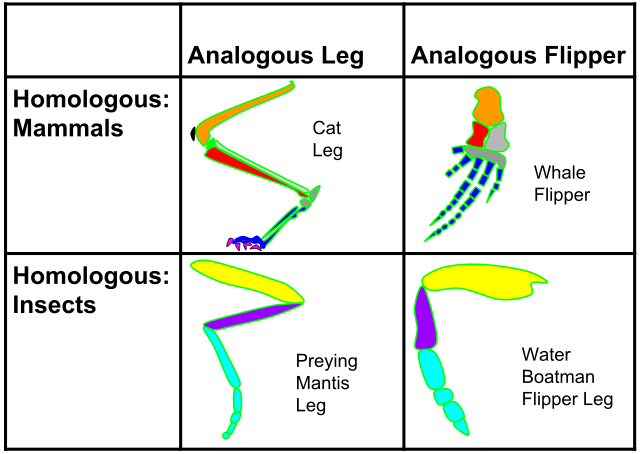
Examples of Analogous and Homologous Similarity. Image: Vanessablakegraham/ CC-BY-SA 4.0
Vestigial structures provide another fascinating glimpse into the past. These are remnants of structures that served important functions in the organism’s ancestors but are no longer needed in the current form of the organism. The human appendix, a small, seemingly useless organ, is thought to be a vestigial remnant of a part of the digestive system that was important in our herbivorous ancestors.
Comparative embryology, a subfield of comparative anatomy, reveals additional evolutionary relationships. Often, embryos of different species exhibit striking similarities, indicating a common ancestry. For example, early in their development, human embryos have a tail and pharyngeal pouches, features reminiscent of their vertebrate ancestors.
In sum, comparative anatomy provides a powerful lens for viewing the history of life. It is as if each organism carries within its body an architectural blueprint, a record of its evolutionary history etched in bones, muscles, and organs. This blueprint provides compelling support for Darwin’s theory of descent with modification, serving as a testament to the shared ancestry of all life.
Cultural Evolution: Tracing the Footsteps of Changing Minds and Societies
Cultural evolution refers to the change in behaviours, beliefs, languages, or technology over time within human societies. This process parallels biological evolution, but instead of genes being passed on and modified, it involves the transmission and transformation of cultural information.
Just as DNA forms the basis of biological inheritance, so too does cultural information—ideas, knowledge, habits—form the basis of cultural inheritance. This information is passed from person to person, generation to generation, often modified along the way. These modifications can be compared to genetic mutations, providing variation upon which selection can act.
Interestingly, genes and culture often co-evolve. For instance, the advent of dairy farming cultures led to an increase in the frequency of lactose tolerance genes in human populations. Similarly, our ancestors’ use of tools and fire may have driven the evolution of traits such as manual dexterity and increased brain size.
Cultural evolution can also drive rapid biological adaptation. Take the example of sundews, carnivorous plants that adapted to nutrient-poor environments by evolving the ability to trap and digest insects. This adaptation could be seen as an analogy to the rapid cultural shifts that enable human societies to survive in diverse environments.
Group selection is another intriguing aspect of cultural evolution. While traditionally controversial in biological evolution, group selection plays a significant role in cultural evolution. This refers to the idea that certain cultural traits may spread not because they benefit individuals, but because they benefit groups. For example, norms and beliefs that promote cooperation can enhance group survival, leading to their spread.
Cultural evolution demonstrates that evolution isn’t confined to the biological realm. The same principles that shape the diversity of life on Earth also guide the course of human culture, driving the ever-changing tapestry of human societies. The study of cultural evolution helps us appreciate the interplay between our biological heritage and our cultural legacy, enriching our understanding of what it means to be human.
Philosophical Implications of Darwin’s Theory of Evolution
Darwin’s theory of evolution has profound philosophical implications, challenging traditional views and raising thought-provoking questions. It invites us to reconsider our understanding of human nature, morality, mind-body interactions, and the nature of purpose and meaning in the universe.
Human Nature and Morality
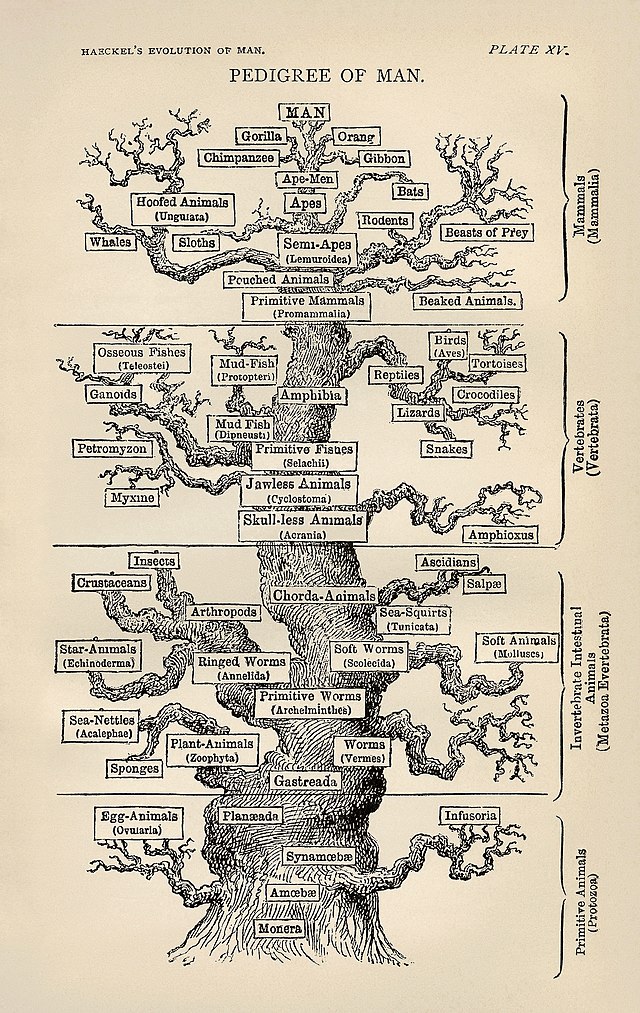
“Tree of Life” as Portrayed in the 19th Century. Image: “Tree of Life” by Ernst Haeckel – Wikimedia.org
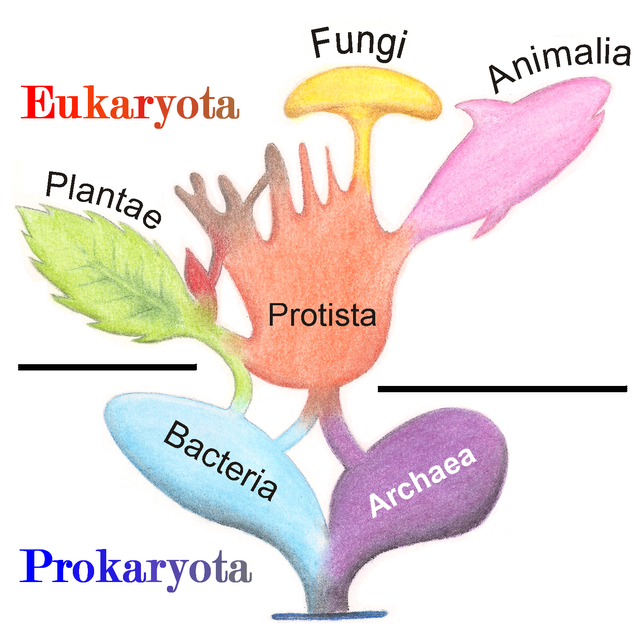
A Modern Representation of the “Tree of Life”. Image: Shutterstock.
The theory of evolution reframes our understanding of human nature and morality. It challenges the notion of human exceptionalism, placing us as one species among many on the tree of life. It suggests that our capacities for morality, altruism, cooperation, and empathy—traits often considered uniquely human—are not divine endowments but the products of natural selection, evolved because they conferred survival advantages.
Reductionism, Materialism, and the Mind-Body Problem
Darwin’s theory also intersects with philosophical debates over reductionism and materialism. Some interpret evolution as offering purely physical explanations for all aspects of life, including the mind. This view can be seen as an example of reductionism, the idea that complex phenomena can be explained entirely by simpler underlying processes.
Yet, this perspective raises challenges, such as the mind-body problem: How do subjective experiences arise from physical processes in the brain? And how does consciousness fit into a universe shaped by blind, mechanical forces?
The advent of artificial intelligence has further complicated these discussions. If AI systems can exhibit behaviour that seems conscious or self-aware, what does this imply about the nature of consciousness and our understanding of what it means to be human?
The Question of Teleology and Purpose in the Natural World
Evolution also raises questions about teleology—the study of purpose in natural processes. At face value, evolution seems to imply a directionless process, guided only by the impersonal forces of natural selection and genetic drift. Yet, the apparent design and complexity of living organisms have led some to question whether a sense of purpose or direction might emerge from the process of evolution.
This leads us to questions of human interpretation and meaning-making. Even if evolution lacks an inherent direction or purpose, humans, as meaning-making creatures, often interpret evolutionary processes in ways that imbue them with purpose or direction.
Darwin’s theory of evolution doesn’t just change how we understand the biological world; it also reshapes our philosophical landscape. It invites us to grapple with deep questions about our nature, our consciousness, and our place in the universe. It pushes us to think deeply about what we are, where we come from, and where we might be heading.
Theological Implications of Darwin’s Theory of Evolution
The advent of Darwin’s theory of evolution brought forth numerous theological implications, challenging traditional religious beliefs and prompting a variety of responses from different faith communities.
Traditional Religious Objections
Many religious traditions have traditionally taught that the world and its inhabitants are the result of divine creation. As such, Darwin’s theory, with its naturalistic explanation of life’s diversity and origins, was initially met with objections from various religious quarters. The theory also raises the problem of natural evil and suffering, which refers to the pain and hardship endured by creatures as part of the natural processes of life and evolution. This issue challenges traditional notions of a benevolent and all-powerful deity.
Reconciliation Efforts: Liberal Theology and Progressive Movements
Despite these challenges, many religious thinkers and communities have sought to reconcile their faith with evolutionary theory. This effort is often seen within “liberal theology” and progressive religious movements, which tend to interpret religious texts and doctrines in light of modern knowledge and values.
One such reconciliation effort is religious naturalism, which seeks to explore and integrate the religious and spiritual implications of our scientific understanding of the world. The Journey of the Universe (JOTU) project is one example of this approach, offering an epic narrative of cosmic, Earth, and human evolution that aims to inspire a greater sense of connection to, and care for, the Earth and its communities of life.
Fundamentalist Opposition and Scriptural Literalism
However, not all religious responses to evolution have been conciliatory. The growth of religious fundamentalism in the late 20th and early 21st centuries has often been accompanied by a renewed opposition to evolutionary theory. This opposition is typically rooted in a literal or inerrant interpretation of religious scriptures.
In the Christian context, this opposition has manifested in the form of creationism and intelligent design. Creationism holds that the universe and life were created by God as described in the Bible, often interpreted as occurring over six days. Intelligent design, on the other hand, argues that certain features of the universe and living things are best explained by an intelligent cause, not an undirected process such as natural selection.
In the Muslim context, while many accept the scientific consensus on evolution, some uphold a literal reading of the Qur’an and reject the theory, especially concerning human evolution.
The story of evolution continues to intersect with religious thought in complex and diverse ways, illustrating the dynamic interplay between scientific understanding and religious belief. It invites us into a deep exploration of our origins, our place in the cosmos, and the nature of the divine.
Darwin’s Theory of Evolution in Popular Culture

Image: Shutterstock
Darwin’s theory of evolution has not only permeated scientific and philosophical thought but has also made a significant impact on popular culture. Its influence can be seen in various media, from films and documentaries to books and internet memes, though not always accurately represented.
Portrayal in Media
The theory of evolution has provided rich fodder for storytelling in film and television. The ‘Jurassic Park’ franchise, for instance, captivates audiences with its portrayal of dinosaurs brought back to life through the extraction and cloning of DNA trapped in amber. These films explore themes of natural selection, genetic engineering, and the ethics of scientific discovery.
Documentaries, too, have played a crucial role in communicating the concepts of evolution to the public. Renowned naturalists like David Attenborough and Alice Roberts have used this medium to convey the beauty and complexity of life on Earth and its evolutionary history.
Popular Misconceptions
Despite these efforts, misconceptions about evolution persist. Phrases like “survival of the fittest” are often misunderstood as promoting a brutal, dog-eat-dog view of nature or human society. There’s also a common but misguided view that evolution is a linear process of continual improvement, leading to more complex or ‘better’ organisms. Furthermore, many people erroneously see evolution as a process of purposeful design, which it is not.
Communication and Education
Overcoming these misconceptions requires effective communication and education. It’s important to teach the actual mechanics of evolution, such as natural selection and genetic drift, and to clarify that evolution is an unguided process contingent on environmental pressures.
Encouraging critical thinking and fostering a solid understanding of science in the next generation is crucial. By doing so, we can help ensure that Darwin’s theory of evolution is understood, appreciated, and applied correctly, both in academic circles and in popular culture.
In conclusion, Darwin’s theory of evolution has left a significant mark on popular culture, illustrating its wide-ranging influence. Despite the challenges, popular culture provides a powerful platform to engage the public in understanding evolution, its role in shaping life on Earth, and its relevance to our lives.
Conclusion
In the realm of science, few theories have as far-reaching implications as Darwin’s theory of evolution. From shaping our understanding of the biological world to influencing philosophical and theological discourses, it stands as a testament to the power of scientific inquiry. Despite the misconceptions and debates it has sparked, its value in illuminating our origins and our connections to the natural world is undeniable. As we continue to unravel the mysteries of life, Darwin’s theory remains a guiding light, reminding us of our humble beginnings and the intricate tapestry of life that connects us all.
Terry Cooke-Davies
May 2023
This article was created with the assistance of an AI language model developed by OpenAI.



